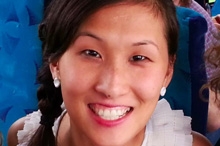

Jennie Magiera is being honored as a Connected Educator Champion of Change.
Classroom Technology is just window dressing; Twitter is for Bieber-loving teens; social networks have no place in schools. These are all opinions I firmly believed less than four years ago. However, in the fall of 2010, I found myself with 32 iPads in my classroom. I spent the first three months floundering to find effective strategies to use these devices. After some time, I realized that I couldn’t do this in a vacuum; I needed support from my colleagues. But as the only iPad teacher in the school, I couldn’t simply go next door and ask for help. I needed a way to reach beyond the walls of my classroom and my building, in order to connect with other iPad-using teachers from around the globe.
This was the beginning of my rebirth as a Connected Educator. In the next few months, I began to subscribe to blogs, join listservs, and enter online communities of educators. In June, I even created a Twitter account. Perhaps a telling example of my shift in thinking, my first tweet, posted on June 7, 2011, was about connecting my students digitally: “Trying out back channel student discussions via twitter... so far so good! Kids are really engaged! And QUIET!!!”
Suddenly my classroom wasn’t about closing the door, teaching a “good” lesson, and then testing my students to see if they “got it.” Instead, the world was my classroom and the globe was our community. This was huge for a fourth grade classroom in an inner-city Chicago school. Students who rarely travelled out of a 15-block radius were suddenly able to connect with nine-year-olds from Brazil. I was able to bring an archeologist into my room via Skype to weigh in on our rock cycle unit. We streamed footage of the Space Jump to explore the layers of the atmosphere. My students hopped on a Google Hangout with another Chicago class to discuss violence in their community.
My students weren’t the only ones who benefitted from this new “connected” mindset. Thanks to those blogs, listservs, online communities and yes, Twitter, everyone on the web was my colleague or co-teacher. I got feedback from teachers in Seoul, Melbourne, and Montreal on my first Problem Based Learning unit. I joined various Google Hangouts to problem solve issues in my classroom. I worked with six teachers from three countries to share this experience by creating courses on iTunes U about teacher professional development strategies. And most recently, I was honored to work with an incredible group of educators to support and promote Connected Educator Month on Google+ and other online platforms.
Beyond enriching my teaching practice and my students’ learning experiences, becoming a Connected Educator has helped me become less myopic about what teaching and learning can look like. I have gained a more global perspective on the classroom and realized that one way of doing things is not the only way to do them. I’ve also gained an international posse of friends, changemakers, and edu-avengers. These are people who want to improve education for our students and who make strides to take idea into practice every day. They keep me inspired, vet my ideas and push me to never settle. I’ve learned that our best isn’t good enough - we must always be improving, asking questions and making new connections - all to support our students’ growth into the best version of themselves.
Jennie Magiera is the Digital Learning Coordinator for a network of 29 Chicago Public Schools, called the Academy for Urban School Leadership. She works to support teachers, students and school leaders to leverage digital tools in improving teaching and learning.


